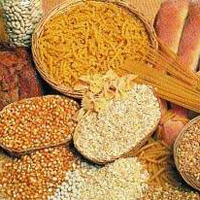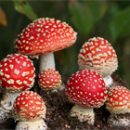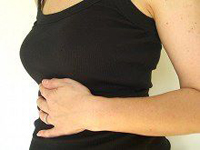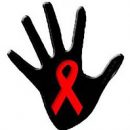Celiac disease refers to the number of diseases, the only method of treatment of which is a diet. What can and that you can not eat people suffering from celiac disease? The answer is the author of this article.
Content
Celiac disease (also called Gerter's disease; Spring Nostras, Spruce Celiac) - This is a chronic disease of the small intestine, characterized by poor absorbability and arising due to the intolerance of gluten, the consumption of which is absolutely contraindicated to people suffering from celiac disease. Food containing gluten cause a reaction that seriously disrupts the slim intestine, causes intestinal atrophy and prevents the suction of nutrients.
In children, the intolerance of gluten causes, first of all, intestinal disorders: diarrhea, vomiting, lack of appetite, bloating. Bad absorption may cause insufficiency in the body of such important elements as iron and vitamins.
In adults, the disease can manifest itself in less severe symptoms, such as asthenia, or in the form of such indirect intestinal symptoms as osteoporosis and anemia.
The cause of gluten intolerance can be both exogenous factors (gluten) and endogenous (hereditary predisposition).
Gluten, which is harmful to predisposed people, is found in numerous cereal, such as wheat. Gluten covers the class of vegetable proteins contained in wheat, in barley and rye.
Rice and corn, not containing gluten, are used in nutrition of patients with celiac disease.
Cereals: there or not
 Currently, the only known method of treating celiac disease is a diet that does not contain gluten. In nature, gluten is found only in some cereals: wheat, barley, rye, sorghum. Thus, it is prohibited: flour, starch, semolina cereals, flakes above grades, the bread is ordinary and special, breadcrumbs, pasta and all their varieties, crackers, crackers, biscuits, pies, pizza, cookies, cakes, cakes, bran, potato cakes Dumplings, malt, cornflakes with malt, muesli, grain and grain mixtures.
Currently, the only known method of treating celiac disease is a diet that does not contain gluten. In nature, gluten is found only in some cereals: wheat, barley, rye, sorghum. Thus, it is prohibited: flour, starch, semolina cereals, flakes above grades, the bread is ordinary and special, breadcrumbs, pasta and all their varieties, crackers, crackers, biscuits, pies, pizza, cookies, cakes, cakes, bran, potato cakes Dumplings, malt, cornflakes with malt, muesli, grain and grain mixtures.
There is no gluten in the following grasses and vegetables: legumes, rice, corn, potatoes, chestnuts, tapioca. Thus, allowed: rice flour, rice starch and paste, potato starch, corn flour, seater, corn starch, popcorn, chestnut flour, flour from millet, soy flour, flour from tapioki, pea flour and from other legumes, flakes from rice, corn, soy, tapioca without the addition of malt.
Products that should be used with caution: Oats and Saracinskaya Cropa.
Oats - this is a cereal plant, the Saracinskaya cereals - this is a bean, and both usually do not contain gluten. In the past, Oats was considered harmful to patients with celiac disease, while recent studies have shown that the daily and long-term use of this cereal in significant quantities does not cause damage to the intestinal mucosa in patients with celiac disease and does not cause similar symptoms. However, it is necessary to keep in mind that most of the products from oats found on sale are usually contaminated with gluten in the process of processing, as well as the Saracense cereals.
Gluten can meet in many finished products, so people with intolerance to gluten need to know their exact composition, indicated on the label and label, which guarantees their safety. Current legislation requires indicate each ingredient, whereas in 25% of the countries of the world it is not mandatory.
Thus, this standard can not be any guarantee. World Commission on Food Products Code in July 1999. Approved a document that recommends that the marking should indicate all ingredients that can cause hypersensitivity, including all cereals containing gluten: wheat, barley, rye, ramp and their derivatives.
These recommendations of the Commission Codex are not yet approved by the Italian parliament. However, the Italian Parliament approved the European Directive on wheat starch, which obliges to indicate in the marking of the origin of the starch used, T.To. they may contain gluten. Also, an indication of plant origin should be for modified starch, which may contain gluten.









